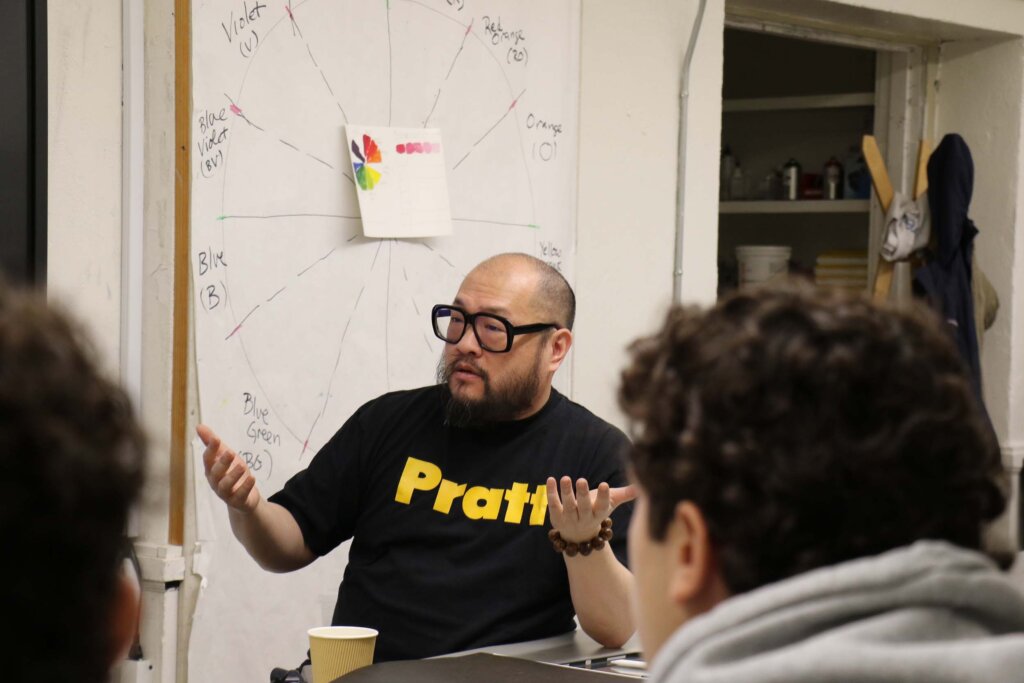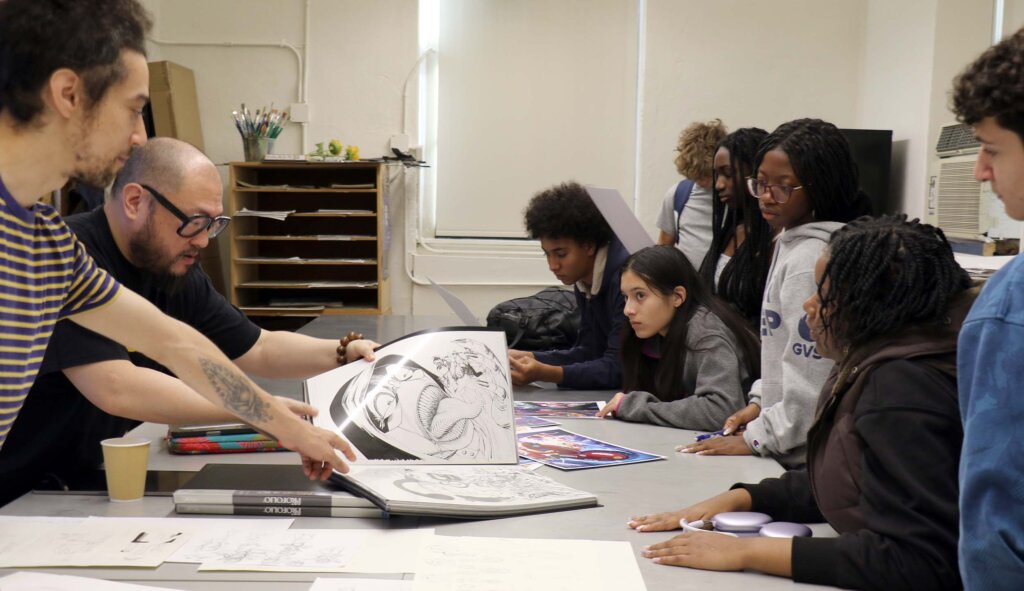News
A Look Inside Poly Upper School: Comic Books and Graphic Novels with Dan Herwitt
DC Comics and Marvel Comic Book Artist/Designer visits Upper School Visual Art class.
One of the defining qualities of Poly’s outstanding education is the opportunity for students to engage with inspirational professionals who are leaders and innovators in their fields. On Wednesday, November 13, professional artist Bernard Chang visited students in our Upper School Graphic Novels course. The class, led by visual arts faculty Daniel Herwitt P’32, gives students a voice to express their experiences and connect with others through personal narrative, fiction, and drawing. Chang is an Asian-American comic book artist and designer, best known for his work in the comic book and entertainment design industries. He is currently the artist and co-creator, along with writer Gene Luen Yang, of Monkey Prince. With a degree in architecture from Pratt Institute, he is also a former Walt Disney Imagineer, designing rides and attractions as a blue sky concept designer.

During the visit with students, Chang shared his 30+ years of experience in the industry, comic book history, and his personal evolution of becoming a successful professional artist. Chang’s talk demonstrated the power of storytelling with the aid of visual art and comic drawing. His lecture was supplemented with remarkable artwork–his comic drawings throughout his career and photographs from different stages of his life as he shared important experiences crucial to his career. He ended the talk by offering one-to-one guidance and direct feedback to students’ class projects. He analyzed their characters drawn in pencil and challenged them to think deeper about their design decisions.

Dan Herwitt says that Chang’s visit was impactful. He offered specific ideas of character creation through design choices to convey a character’s identity. Choices such as the clothes characters wear, their jewelry, stances, and more, furthered students’ understanding of graphic novel development. Representation is powerful, Herwitt reflected, “it’s important for students to see a professional artist in action and to understand that there are creators out there who are not only making a living off their work, but who also are doing something that they love and that they’re really passionate about.”
Chang’s visit cements the notion that one doesn’t have to compromise one’s passions to secure a bright future; on the contrary, it is through commitment to developing their skills in pursuit of their passions that they may encounter the greatest opportunities.

According to Poly’s Curriculum Guide, “there is an active renaissance of authors and artists dedicated to genre bending, speaking about the multitude of issues teenagers and young adults face today.” Herwitt’s class is in the process of writing narrative and drawing to create a sequential multi-page comic book. Students in the course may explore a new space for personal creativity to flourish, using drawing and text together to create a powerful narrative of self-expression. Creating a graphic novel requires many creative layers from concept, to writing and storyboarding, to drawing. Herwitt explains, “there are a lot of different elements [to the process of making a comic]. You’re a set designer, character designer, writer, and drawer. You have to take all these different elements and then create a work of art from them.”
In order to instruct students on how to become more fluent in that multifaceted process, Herwitt shares a plethora of different comic artists’ work. Individual students bring different experiences and levels of drawing to the course. They explore graphic novels, Sunday funnies, and spot illustrations. They learn foundational ideas for designing characters and dive into the processes of outlining, brainstorming, and thumbnailing, which guide them in breaking larger story ideas into smaller snippets to convey everyday realities through a fresh perspective.




